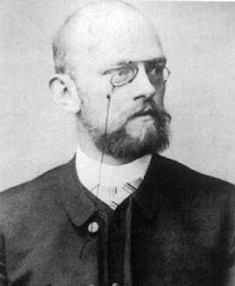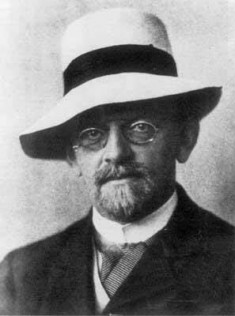David Hilbert was a good example of a celebrated, established, and scrupulous mathematician. His works helped pave the way for contemporary mathematical research. He was the very first to distinguish between metamathematics and mathematics. Considered one of the best mathematicians of the 20th century, Hilbert left a legacy of his vast knowledge in various divisions of math and was also the very first person to discover invariant theory.
Early Years
David Hilbert was born in 1862 in Koenigsberg, East Prussia. He was the son of Otto Hilbert and Maria. While his family survived with only limited means, his father was a reputable judge and his mother was an astronomy and philosophy enthusiast. David’s mother was very fascinated with prime shapes and numbers and this is potentially one of the main reasons why David excelled in mathematics at a tender age. He also showed more interest in languages, but dropped this interest to focus on mathematics and science.
Educational Years
David Hilbert went to the Gymnasium in Konigsberg for the early part of his education. After he graduated from there, he went to the Konigsberg University to study for his doctorate, which he earned in 1885. Among David’s friends at the school was Minkowski, and they strongly influenced one another. Wallie Hurwitz was appointed to Konigsberg University in 1884 and he also quickly became friends with David. Their friendship was a very important factor in David’s mathematical progress.
David received his Doctorate in Philosophy from the University of Konigsberg. After taking the advice of his friend Wallie Hurwitz to explore European mathematics, David met with Felix Klein in Leipzig, Leopold Kronecker in Berlin, and Henri Poincare in Paris, only to find their ideas somehow uninspiring.
Hilbert’s Career Highlights
The first steps of David’s career occurred at the University of Gottingen when he was offered a position of lecturer there. He turned it down, however, because of the low salary. He relied on the fees of his pupils which varied according to the number of students who attended his lectures. David found it hard to carry on as the lecturer. He filed a complaint to the university. When David felt that nothing was being done to improve the situation, he went for another study tour.
 Since his last experience was not very good, this time around David planned his study trip in advance to meet up with the greatest mathematicians in the world. Unlike his first trip, Hilbert was satisfied with his second trip, and got back to the university to work on discovering the solution to a mathematical problem on rules of finite basis. After several months of hard work, David believed that he had found a perfect solution to the problem. Believing his discovery was a mathematical breakthrough, he became overjoyed.
Since his last experience was not very good, this time around David planned his study trip in advance to meet up with the greatest mathematicians in the world. Unlike his first trip, Hilbert was satisfied with his second trip, and got back to the university to work on discovering the solution to a mathematical problem on rules of finite basis. After several months of hard work, David believed that he had found a perfect solution to the problem. Believing his discovery was a mathematical breakthrough, he became overjoyed.
David remained at the university as a lecturer from 1886 to 1892. Gottingen University was a flourishing tradition in math mainly because of the contributions of the likes of Carl Friedrich Gauss, Bernhard Riemann, and Peter Gustav Lejeune Dirichlet in the 19th century. During the first 30 years of the 20th century, the school’s mathematical tradition attained greater eminence, mainly because of David Hilbert. The University of Gottingen drew students from the world over.
Later Years
After his successful breakthrough, David achieved great successes in his personal life, too. After his friend Hurwitz became a professor at the Swiss Federal Institute of Technology, David became an assistant professor at the University of Konigsberg. A few weeks later, the German Mathematical Society appointed him to conduct a study of number theory.
Greatest Achievements
David Hilbert discovered the use of algebra and geometry and he came up with the idea of Hilbert spaces. Hilbert’s discovery in geometry had a huge influence in that time. The study of axioms of Euclidean geometry got him to suggest 21 such axioms, in which he examined their importance. Weyl, one of the most influential mathematicians of the time, appreciated his works related to a theory of invariants and highly praised the commitment he showed towards the subject.
